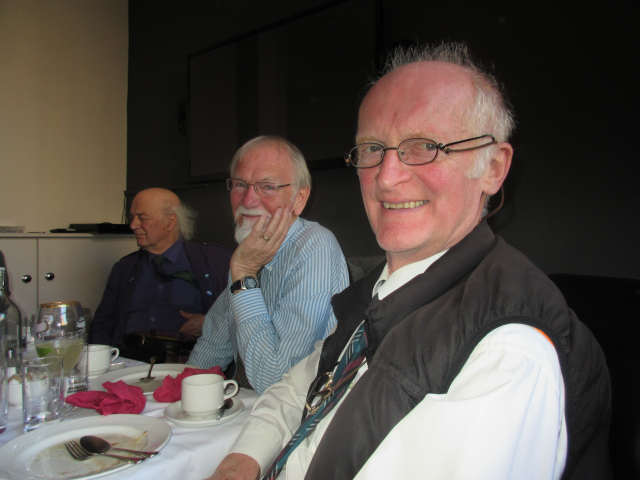Born in 1793 at White Horse Close to parents John Dick a farrier and Jean Anderson from New Deer in Aberdeenshire, William Dick was encouraged by his father to attend John Barclay's comparative anatomy lectures at Surgeons Square. Having then attended the Royal Veterinary College in London, in 1823 he founded a veterinary college in Edinburgh with the backing of the Highland Society, teaching on his own until 1844 when he recruited his first staff including John Barlow as the first professor of Anatomy, Physiology & Pathology.

Colin Warwick and Alastair Macdonald
After the early death of John Barlow in 1856 his post was filled by the young John Gamgee. He and the aging William Dick disagreed on aspects of veterinary science, Gamgee’s contract was not renewed, so he set up a rival vet school in 1857 - first in a Drummond Street courtyard then in Lothian Road (1862) before moving to London and shutting down in 1865.
Mary Dick, William's elder sister, was reputed to have been instrumental in the administration of the school. By the time of Dick's death in 1866, the over 900 students he had taught were to be found throughout the world - among them the founders of veterinary schools in Australia, Canada, Ireland and the United States.
Upon his death, Dick bequeathed his College in trust to the Burgh Council of Edinburgh. It was officially named Dick’s Veterinary College following a request made by his sister, in 1873, in response to a crisis caused by the establishment of another rival – the New Veterinary College set up by alumnus and former Principal William Williams who had taken with him the majority of the students and the library. Williams’ veterinary college established itself for a decade from 1873 at Gayfield Square before moving to custom-built premises at Elm Row. Aileen Cust, Britain's first lady vet should have graduated from this College in 1900 but had to wait 22 years until the Royal College of Veterinary Surgeons would admit women to the profession. The two schools existed amicably within 100 metres of one another in Edinburgh’s New Town until 1904 when the Williams one moved south, forming the basis of the University of Liverpool Faculty of Veterinary Science.
Premises at Clyde Street that included dissection rooms and an anatomy lecture theatre are commemorated by a plaque on the wall of the escalator at the bus station.
Principal Orlando Charnock Bradley oversaw the Dick School's transfer to Summerhall where the chimney of the old brewery was demolished in 1913 and the foundation stone laid on 21 July the following year, covering a time capsule. A stained glass window installed in 1923 for the centenary was donated by surgeons trained at Clyde Street. During the Second World War Polish staff and students exiled to Edinburgh opened their own veterinary school at Summerhall, and the links with Poland commemorated on a plaque continue to this day.
From 1951 as part of the University of Edinburgh, the Royal (Dick) School of Veterinary Studies installed its first female principal, Elaine Wilson, who was Head of School from 2003 to 2011. The School, once male-dominated, now has an intake of about 80% female, reflecting not only girls' greater maturity at 18 but also a wider and deeper interest in animal care among women. One measure of ever increasing staff attention to student learning may be that in July this year and last, everyone in final year graduated.
In 1947 the school occupied the home farm at Easter Bush. Going on from that start, it established a Field Station and a Centre for Tropical Medicine there in 1962. A hospital for small animals was then opened in 1999, followed the next year by an equine hospital. In 2009 a cancer investigation unit was attached to the hospital for small animals, and in 2011 the erection of the Roslin Institute and a veterinary teaching building added to integration of the Easter Bush Campus. Now about 200 students annually embark on a four/five-year veterinary undergraduate training course, and there are a large number of research postgraduate students. Edinburgh Napier University and Edinburgh College co-ordinate the training of veterinary nurses. The stained glass windows, a horse sculpture, paintings and other memorabilia have moved to Easter Bush, leaving Summerhall to reinvent itself since 2011 as an arts centre, technology start-up space and conference venue, with once again, a brewery.